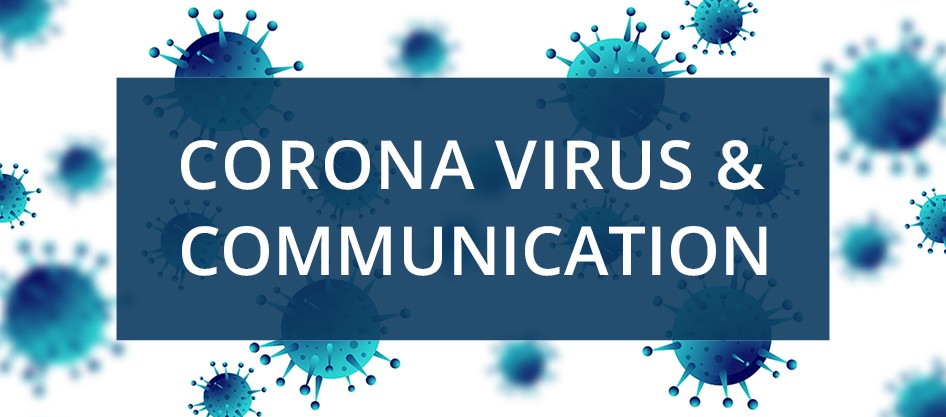The year 2020 has been unlike any in recent human memory. Devastating as it has been, what can we seek to learn from the Covid-19 pandemic about communication?
The following practices are not only relevant to companies like Lexcelera that are in the business of communication, but also to every individual and organization. The need to communicate is universal and has become even more important and urgent this year.
And, while the pandemic is mainly about crisis communication, we can draw parallels from it to communication in more ordinary times, too.

Often, the content function in companies is spread out across departments. This can cause content to get trapped in silos. Harvard Business Review has talked about how content needs to be produced centrally, so it is accessible to all. Governments that followed this approach were successful in getting a unified message out fast.
However, companies that engage in global communication need to consider that local teams’ input and participation is critical in creating user-facing content.

Whether to fight a virus or to achieve effective global communications, there is no playing down the need to have a unified vision, to collaborate, and to cooperate. This is often lacking in big enterprises. The different business arms are not in sync with each other’s goals and processes. It can result in repetition of work, disparate content, inconsistent quality, avoidable costs, and finally a broken user experience.
A unified vision is key to such collaboration. Everyone in the company needs to be aware of the overarching goals and align their department’s as well as their own processes towards this goal.
In Germany, many hospitals shared data with a federal website which showed how much capacity they had. They also cancelled all elective surgeries to make room for Covid-19 patients. This way Germany’s hospitals ended up with extra capacity which they used to treat international patients. The understanding that we have to fight Covid-19 unitedly, irrespective of our nationalities, drove such action.

Health emergencies are a time when messages need to be communicated fast, but speed at the cost of clarity often makes the communication pointless. To take another example from Germany, virologist Christian Drosten’s podcast attracted millions of followers in the early days of the pandemic. He doesn’t dumb down the science. Instead, he shares complex ideas in an accessible way. He touches upon aspects of the virus that laypeople may not have understood well.
Avoid jargon in communication, especially when you are talking to non-specialist audiences. When you must use a difficult term, provide an explanation.

As always, if not for translation, the messaging about corona virus and how to fight it would have remained locked in a few languages of the world. In the same way, your company’s brand messaging needs to reach all the markets in which it operates. This can only happen with translation. In a multilingual world, you simply don’t exist in the minds of your potential consumers without translation.
A lot of translation is about conveying critical information. For instance, instructions for use in drug packaging or for medical devices; user manuals of electrical instruments; and so on. Even weather information can be critical to fisherfolk.

Translation goes hand in hand with localization. One of the to-dos in fighting against corona was to sneeze into a tissue and dispose it carefully. In many developing countries, everyone may not use a tissue. They may instead be in the habit of using a cloth napkin or hand kerchief. This might even be a better way as handling the used tissues itself may become an issue because the waste management capabilities of these countries are already over-burdened.
Hence, some audiences prefer more visual content than textual.
So, the message needs to be localized to suit the ground reality of the practices in different countries and provided in their preferred formats.
Similarly, localization involves every aspect of global content. From date, address, number, and time formats to the terms used by people in different countries to refer to your products, localization is critical at every step.

Uji is Translators without Border’s first multilingual bot. It answers questions related to corona in Lingala, French, and Congolese Swahili and is set to learn more African languages soon. In a health emergency, speed, accessibility, and scale are all important. Improvements in translation technology for speakers of low resource languages will mean better participation and better health in emerging economies. This leads to the overall improvement of the world’s health as well as the economy.
The role of humans in the advancement of these technologies remains undisputed. Without linguists fine-tuning and training artificial intelligence systems, the latter’s ability to parse human languages would not have reached where it has today.
An understanding of this interaction between human and machine is necessary to see how communication will be shaped in the coming years.

The governments that have succeeded most in raising corona awareness have been the ones that have shown empathy and produced a coordinated response. Similarly, enterprises that understand and respond to user needs and cater to them consistently will achieve success in international business.
With production offices in Paris, Buenos Aires, and Bangkok, and commercial offices in London and Vancouver,
at Lexcelera, we’re available to deliver projects and answer questions 24/7—guaranteed.
Vijayalaxmi Hegde








